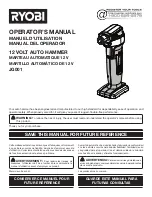
BOP HIPWR 080709
3-41
3.4.5
MONITORING OUTPUT CURRENT USING AN ANALOG SIGNAL
The BOP provides an output analog signal, 0 to ±10V, that is proportional to the output current
which is always available. For the master of a parallel or series configuration this signal is pro-
portional to the output current of the parallel or series combination. This signal is available at pin
3, referenced to pin 10, of the Analog I/O port. To protect the BOP circuitry this signal is provided
via a series 2K ohm resistor, thus requiring a high impedance monitoring device or instrument.
3.5
DIGITAL REMOTE MODE PROGRAMMING
BOP models may be digitally programmed over a control bus using SCPI (Standard Commands
for Programmable Instruments). SCPI provides a common language conforming to IEEE 488.2
for instruments used in an automatic test system (see PAR. 3.6). The control bus used must be
either the IEEE 488 standard communication bus (General Purpose Interface Bus, GPIB), or the
RS 232C Serial Bus.
Refer to Table 2-11 for input/output signal allocations for communication via the GPIB, Table 2-5
for RS 232, and Table 2-2 for the BITBUS. All power supply functions available from the keypad
can be programmed via remote SCPI commands. In addition, some features that are not avail-
able from the keypad may be implemented using remote commands (see PAR. 3.5.1).
This section includes a discussion of GPIB bus protocols (PAR. 3.5), instructions for changing
the GPIB address (PAR. 3.5.3.1.1), a discussion of the VISA (Virtual Instrumentation Software
Architecture) driver supplied with the unit (PAR. 3.5.5), RS 232C Operation (PAR. 3.5.6), fol-
lowed by a detailed explanation of SCPI programming (PAR. 3.6).
3.5.1
OPERATING FEATURES AVAILABLE ONLY BY REMOTE COMMANDS
The following paragraphs describe features of the BOP that are not available from the front
panel, but can be implemented using remote commands.
3.5.1.1
EXPANDED WAVEFORMS AND PROGRAMS
Refer to the documentation supplied with the VISA driver included with the BOP for more
detailed information regarding waveforms and programs, including examples of how to create a
table to load the variables.
3.5.2
PROGRAMMING TECHNIQUES TO OPTIMIZE PERFORMANCE
3.5.2.1
PROGRAMMING VOLTAGE/CURRENT LIMIT AND CURRENT/VOLTAGE LIMIT
Kepco's auto-crossover digital supplies can operate in either voltage mode with current limit, or
current mode with voltage limit. The operating mode is determined by the voltage and current
commands received, as well as the load. Each time voltage and current commands are
received, the unit must evaluate the commands and the load conditions to determine the neces-
sary operating mode. Reducing the number of times this evaluation must be made is desirable
because Kepco's digital auto-crossover supplies employ two separate feedback loops. Each
time there is a potential mode change, there is always an uncontrolled period of a few millisec-
onds while the two feedback loops compete for control of the output. By changing only the
active parameter (e.g., voltage for voltage mode), there is no doubt as to what the operating
mode will be, so the unit is never uncontrolled, response is quick and no transients are possible.
Recommended programming techniques are:
Содержание BOP 1000W
Страница 2: ......
Страница 10: ......
Страница 20: ......
Страница 31: ......
Страница 32: ......
Страница 36: ......
Страница 50: ...FIGURE 2 2 LOAD CONNECTIONS LOCAL SENSING...
Страница 53: ......
Страница 54: ......
Страница 55: ......
Страница 56: ......
Страница 57: ......
Страница 61: ...FIGURE 2 11 POWER ON DEFAULT SCREEN FOR SLAVE UNIT 2 8 4 OPERATING INSTRUCTIONS FOR MULTIPLE UNIT COMBINATIONS...
Страница 63: ...080709 C 25 FIGURE 2 12 3 X 2 3 SERIES X 2 PARALLEL CONFIGURA TION LOCAL SENSING TYPICAL 2 25 2 26 Blank 24 25...
Страница 64: ......
Страница 68: ...FIGURE 3 3 POWER UP SCREEN SHOWING GRAPHIC METERS VOLTAGE 0000 0...
Страница 125: ......
Страница 128: ......
















































